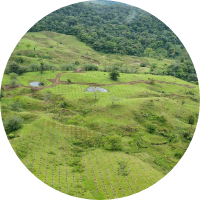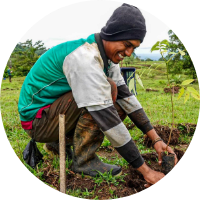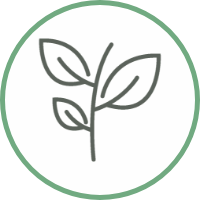Home | Carbon offsets | Improved Biodiversity & Mixed Reforestation, Costa Rica

Improved Biodiversity & Mixed Reforestation, Costa Rica

Vital habitat restored for endangered wildlife
Spanning five sites, the project restores Atlantic lowland rainforest corridors for threatened species like Baird’s Tapir, Jaguar, and the Great Green Macaw, all listed on The International Union for Conservation of Nature's (IUCN) Red List.

Over 70 new species rediscovered
Biodiversity monitoring has confirmed the return of 70 amphibian and reptile species, alongside the revival of the threatened Dipteryx panamensis tree, highlighting the project's ecological value.

50,000+ tonnes of CO2 already removed
With over 50,000 tonnes of carbon sequestered so far—and double that projected—the project contributes significantly to both climate and conservation goals.
Improved Biodiversity & Mixed Reforestation is a leading project within the region, spread over five sites in the Central North of Costa Rica.
Planting native species on previously degraded farmland, the reforestation efforts will serve as habitat and biological corridors for many rare and endangered wildlife species of the diminishing Atlantic lowland rainforests in Central America. Wideranging mammals common to the area include oncilla, olingos, margay, geoffrey’s spider monkey, capuchin, mantled howler monkey, and the giant anteater, which will benefit from the project development.
In addition, Baird’s Tapir (Tapirus bairdii), Jaguar (Panthera onca) and the Great Green Macaw (Ara ambiguus) are just a few examples of species of the “IUCN Red List of Threatened Species”, which have already been sighted within the project area.
By constantly monitoring biodiversity, this project has discovered that 70 new species of amphibians and reptiles have resettled on its land. Benefits are also to the flora, and by using ‘dipteryx panamensis’ as one of the main tree species planted, the project contributes specifically to the survival of this threatened tree species of Costa Rica.
Since the project has begun, over 50,000 tonnes of carbon has been removed from the atmosphere, with double this amount expected to occur over the crediting period of the project.
UN Sustainable Development Goals met by this project:

















Explore our projects

Blue Carbon Mangrove Restoration, Pakistan
Blue Carbon Mangrove Restoration in Pakistan’s Indus Delta spans 350,000 ha, removing 142 million tonnes of CO2e for global climate mitigation.
Project status: Active
Learn more about the Blue Carbon Mangrove Restoration project
Elazig Solar Farm,
Turkey
Elazig Solar Farm pioneers high-efficiency solar power in Turkey, reducing reliance on fossil fuels and stabilising energy costs.
Project status: Active
Learn more about the Elazig Solar Farm project
Household Solar Lighting, Zambia
This project provides solar lighting to Zambian families, reducing carbon emissions and enabling safer study, cooking, and socialising at home.
Project status: Active
Learn more about the Household Solar Lighting project
Reforestation on Degraded Land, Uruguay
This project restores 21,298 hectares of degraded grazing land in Uruguay, creating sustainable forests to boost biodiversity and carbon capture.
Project status: Active
Learn more about the Reforestation on Degraded Land project
Salkhit Wind Farm, Mongolia
Salkhit Wind Farm is Mongolia’s first grid-connected wind project, supplying renewable energy and advancing expertise for future developments.
Project status: Active
Learn more about the Salkhit Wind Farm project
Wind power in Karnataka, India
This project in Karnataka generates renewable wind power, reducing fossil fuel reliance and supporting India’s Southern Electricity Grid.
Project status: Active
Learn more about the Wind power in Karnataka project
Peatland protection - Rimba Raya
The Rimba Raya Biodiversity Reserve protects carbon-rich peatland from palm oil deforestation, preventing 100 million tonnes of emissions.
Project status: Inactive
Learn more about the Peatland protection in Rimba Raya project
Peatland protection, Keo Seima, Cambodia
The Keo Seima Wildlife Sanctuary in Cambodia protects endangered wildlife and supports local Bunong communities through conservation and sustainable development.
Project status: Inactive
Learn more about the Peatland protection in Keo Seima project
Tropical Forest Protection, Mai Ndombe
The Mai Ndombe project in the DRC reduces forest and biodiversity loss whilst providing community prosperity through vital investments into the local area.
Project status: Inactive
Learn more about the Tropical Forest Protection project